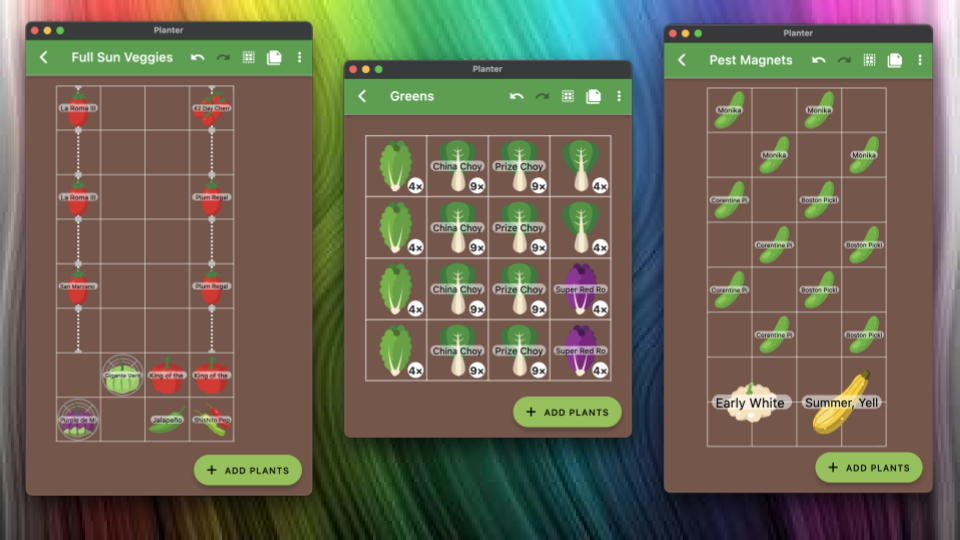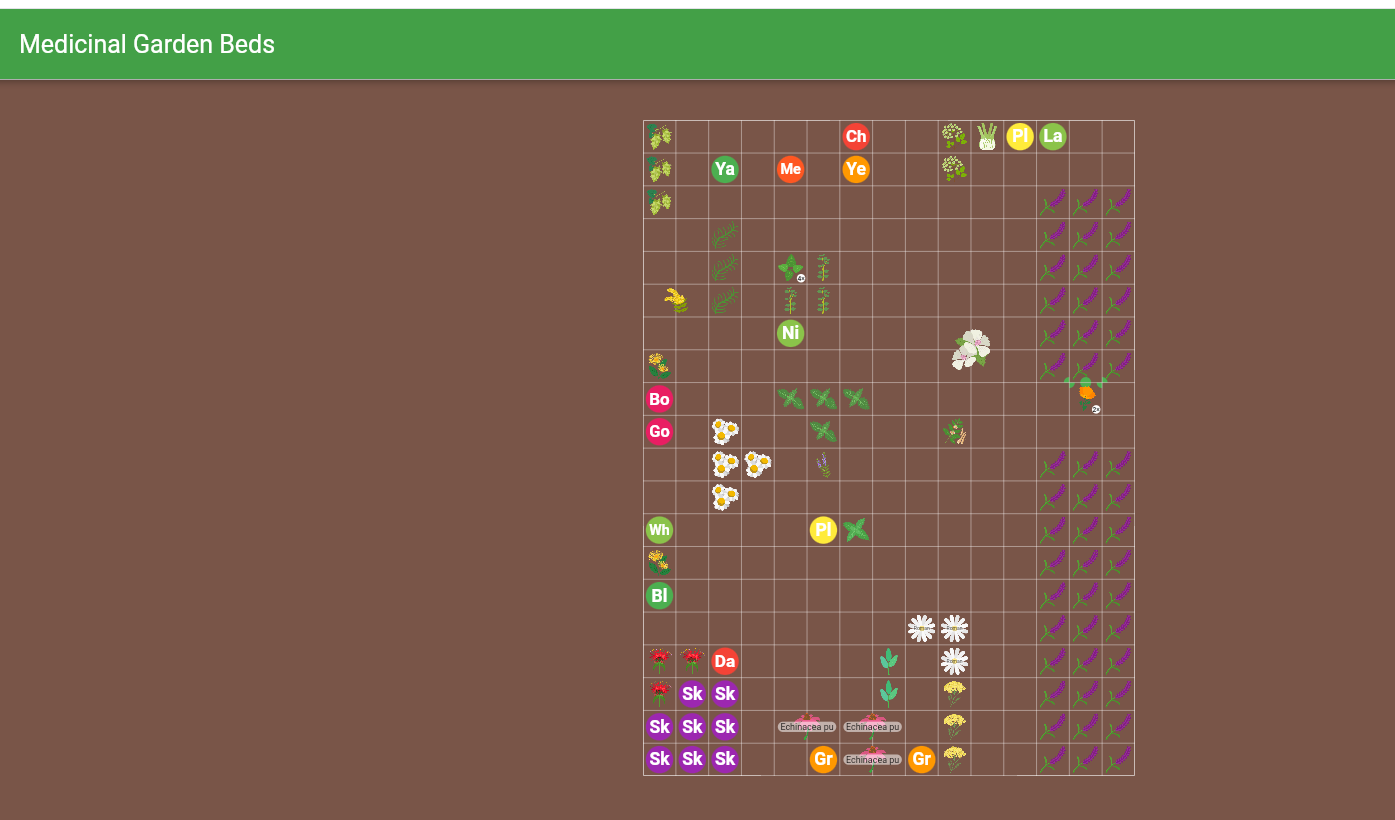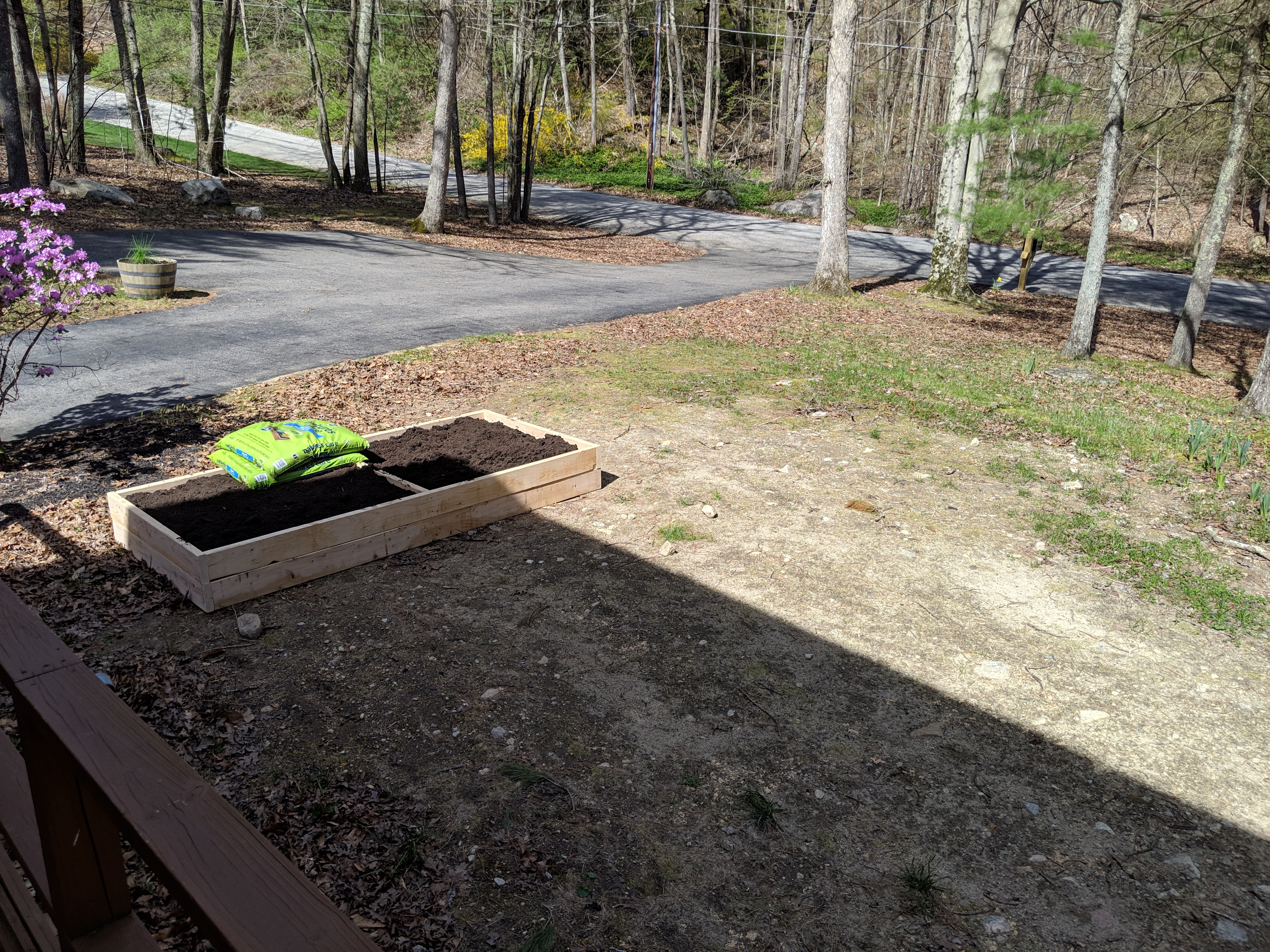We are getting geared up for the 2025 gardening season! The first step before we can get growing though is to plan out our gardens in Planter. Read on to see what our Planter team members are up to this year, and how we’ve used Planter to bring our garden plans to life. We hope you’ll find some creative ideas to implement in your own plans!
If you haven’t already seen (or heard) it, check out our latest podcast episode where Peter, Milan, and Erin chat about our garden plans and what we’re doing differently in 2025:
Peter
This year is a big one for me, garden-wise! After 4 years of not having a garden on my property, I will finally be able to walk out my door and pick a tomato off the vine. No more loading up the car with garden tools and jugs of water in the early spring to water seedlings at the community garden! Well actually, that’s a bit of a lie, as I will still continue to have a garden plot at the community garden, at least for this year. This winter we’re cutting down several trees to make a sunny spot for a veggie garden. At about 6-7 hours of sunlight, it still won’t get as much sun as the community garden, but it will get more consistent water and more attention overall. This year will be an experiment to compare how the plants do in the new garden compared to the community garden.
Hopefully at the end of the season we’ll know what’s better, plenty of sun or consistent watering? Will tomatoes actually produce fruit with just 6-7 hours of sunlight? Will leafy greens bolt less with the extra shade? Will my isolated garden fare better pest-wise than the pest-ridden community garden?
To answer these questions, I’ll be planting several identical raised beds in both gardens:

Test Bed 1 - Full Sun Veggies: Nothing needs more sun than nightshades, so this bed will have a variety of tomatoes, tomatillos, and peppers.
Test Bed 2 - Greens: Lettuce, bok choy, and komatsuna will make up this 4x4 raised bed.
Test Bed 3 - Pest Magnets: In my experience, cucumbers and squash all get hammered by pests.
Erin
This year, I moved to a new property that has more land to garden on. I am planning to sell veggies at our local farmers market (and my husband and I will eat a lot of veggies ourselves!) I started with an initial plan in a spreadsheet then I used Planter to visualize where the plants will go in the garden beds. The plant icons in Planter make the plan come to life in a way that’s tricky to do in a spreadsheet. Once I saw the plants in place I knew I had to make some tweaks to optimize the layout. Planter’s drag-and-drop interface makes it super easy to move plants around so you can tweak and make changes until you’re happy with your plan. I’ve intentionally left a few beds open in my plan. I might end up filling them or using them to trial some new ‘experimental’ plants. With Planter it’s easy to adjust my plan on the fly so I can adapt to what the season brings!

Wren
We’ve had an influx in garden pests these past couple years, so we’re going to be focusing a little more on flowers in our garden this year. I have a good amount of flower seeds but was having trouble visualizing where I wanted the flowers to go. Using the Planter app, it really helped me visualize the specific garden beds I want my flowers to be in and how I want them laid out. I feel a lot more comfortable about my plan for my yard this spring now that I know where everything is going.

Samantha
This spring I’m excited to grow a lot of onions and lettuce. I didn’t grow enough last year, so this year I’m dedicating more space to those. I always have to have a little radish patch too. I am very into horseradish lately so I’m going to grow some more this year. I’m still working on my summer garden plans and thinking about what I want to devote my time to. Tomatoes will be a must, some kind of pepper, and there will be a lot of basil. I know I need to move my strawberry patch. Right now it’s under a tree and the birds went crazy eating them. I need to decide the best new location to move the strawberries to.

My medicinal herb garden will mostly stay the same since a lot are perennials. But this year I’m loving all of the new icons that have been created for the Planter App!

Milan
My garden is split into two distinct areas.
The first part of my garden is in my front/side yard. It features 3 prototype raised garden beds, each with different tools to support growth.
Bed number 1 is what I call my market bed. It is 20’ x 3.5’ and features metal hoops that allow me to add covers for frost, shade, or insects.
I’ll be interplanting this bed with 6-7 determinate tomato plants. I’m choosing bush varieties that are bred to grow well in containers as well as high-heat. The variety that I’m most excited about is the Hossinator Tomato. It’s a prolific slicer that has impressive disease resistance.
Between the tomatoes, I’m going to experiment with some lettuce plants. I want to see if the shade from the tomatoes will keep them from bolting so quickly.
Along the front row of this bed, I’ll have several varieties of bush beans, herbs, and peppers.

Bed number 2 is a 4’ x 8’ bed with a poly top and roll-up sides. It’s designed to emulate a high-tunnel. Once spring temperatures arrive the sides stay up until winter. The top causes this bed to still be a little warmer than the other beds so I’m dedicating it to some heat loving plants.
I’ll be planting some indeterminate tomato plants that were bred to be grown in Florida. I’ll also be growing some eggplants alongside of them. These are labeled as combative plants, however I’m grouping them because they have similar growing needs and can handle the heat.
The third bed in the front yard is my trellis bed. It is a 4’x8’ bed with a built in trellis. I’ll be dedicating this bed to growing cucumbers, dill, and melons.
The second part of my garden is in my backyard. It features 4 galvanized steel raised garden beds.
I will be planting 3 of the beds using single crops. I learned the hard way that watermelon and sweet potatoes grow really rapidly and need plenty of room to spread their vines.
After growing corn for the first time last year, I became hooked. So, I’m excited to dedicate another bed to just corn.
Finally, I’ve wanted to try the 3-sister companion method. So, that bed will include corn, pole beans, and squash/zucchini.

I’m really looking forward to a bountiful harvest season, and I cannot wait to share with you all!
